Four particles A, B, C and D are moving with constant speed v each. At the instant shown relative velocity of A with respect to B, C and D are in directions :-
ltimg src="https://d10lpgp6xz60nq.cloudfront.net/physics_images/ALN_PHY_R05_E03_014_Q01.png" width="80%"gtSolution in Gujrati
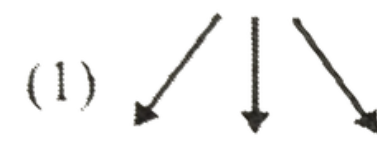
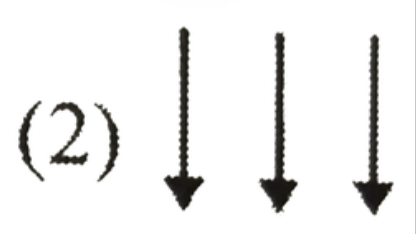
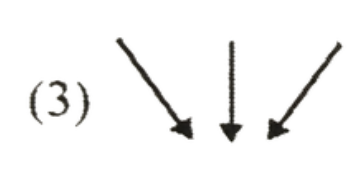

The correct Answer is:A
Step by step video & image solution for Four particles A, B, C and D are moving with constant speed v each. At the instant shown relative velocity of A with respect to B, C and D are in directions :- ltimg src="https://d10lpgp6xz60nq.cloudfront.net/physics_images/ALN_PHY_R05_E03_014_Q01.png" width="80%"gt by Physics experts to help you in doubts & scoring excellent marks in Class 12 exams.
Updated on:21/07/2023Topper's Solved these Questions
- RACEBOOK - ALLEN CHAPTER - RACEEXERCISE - Basic Maths (NEWTONS LAWS OF MOTION)
49 Videos
- RACEBOOK - ALLEN CHAPTER - RACEEXERCISE - Basic Maths (FRICTION)
13 Videos
- RACEBOOK - ALLEN CHAPTER - RACEEXERCISE - Basic Maths (Units, Dimensions & Measurements)
37 Videos
- NEWTONS LAWS OF MOTIONBOOK - ALLEN CHAPTER - NEWTONS LAWS OF MOTIONEXERCISE - EXERCISE-III
28 Videos
- SIMPLE HARMONIC MOTIONBOOK - ALLEN CHAPTER - SIMPLE HARMONIC MOTIONEXERCISE - Example
1 Videos
Similar Questions
There are two bodies A & B of same mass body A is at rest while body B is under going uniform motion, which is correct statements ?
View SolutionA block of mass 1 kg is plased on a surgace for which μs=0.2&μk=0.15, an external force F is applied on the block as shown in the figure, using g=10m/sec2, find:
(a) The force of friction on block
(b) Its acceleration
(i) When F=1 N
(ii) When F=2 N
(iii) When F=2.5 N

View SolutionWhich one of the following is not a fundamental quantity ?
View SolutionAssertion: The driver in a vechicle moving with a constant speed on a straight road is in a non-inertial frame of referance.
Reason: A reference frame in which Newton's laws of motion are applicable is non-inertial.
View SolutionA rod with rectangular cross section oscillates about a horizontal axis passing through one of its ends and it behaves like a seconds pendulum, its length will be
View SolutionFour particles A, B, C and D are situated at the cornerst of a square ABCD of side a at t-0 . Each of particles moves with constant speed (v). A always has its velocity along AB, B along BC, C along CB~ and D along DA . At what time will these particles meet each other ?
View SolutionA,B&C are three objects each moving with constant velocity. A's speed is 10m/sec in a direction −−→PQ. The velocity of B relative to A is 6m/sec at an angle of, cos−1(15/24) to PQ. The velocity of C relative to B is 12m/sec in a direction −−→PQ, then find the magnitude of the velocity of C.
View SolutionA particle is given velocity v_0 at point A as shown in the figure. Find the speed of particle at point B,C and D
View SolutionThree particles A, B, Care located at the comers of an equilateral triangle as shown in figure. Each of the particle is moving with velocity v. Then at the instant shown, the relative angular velocity of
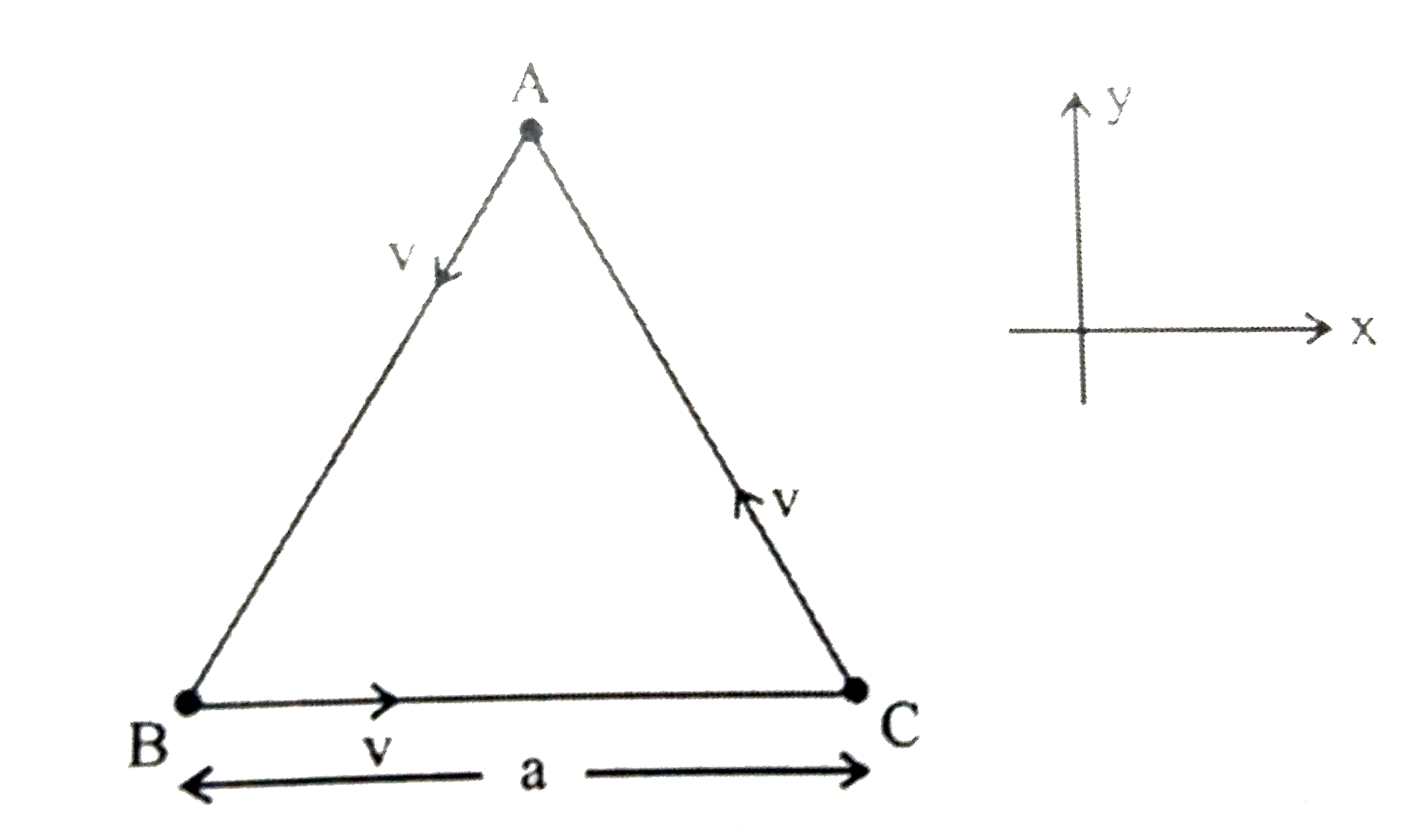
View SolutionA particle is acted upon by a constant force always normal to the direction of motion of the particle. It is therefore inferred that- (a) Its velocity is constant (b) It moves in a straight line (c) Its speed is constant (d) It moves in circular path
View SolutionFour particles A, B, and C and D of masses mA,mB,mBandmD respectively, follow the paths shown in the figure, in a uniform magnetic field. Each particle moving with same speed. QA,QB,QCandQD are the specific charge of particles A, B, C and D respectively (assume that the motion of each particle is in the same plane perpendicular to the magnetic field).
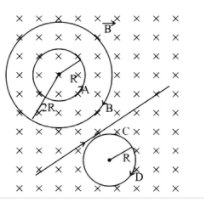
View SolutionTwo bodies A and B are moving with velocities vec(V)_(A) and vec(V)_(B) making an 'theta' with each other. Determine the relative velocity of A with respect to B. What will be the relative velocity . When two bodies are moving in the same direction.
View SolutionTwo bodies A and B are moving with velocities →VAand→VB making an 'θ' with each other. Determine the relative velocity of A with respect to B. What will be the relative velocity .
When two bodies are moving in the apposite direction.
View SolutionFour particles A, B, C and D are moving with constant speed v each at the instant shown relative velocity of A with respect to B, C and D are in directions
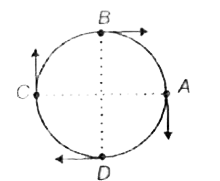
View Solutionसरल रेखा AB पर एक कण नियत त्वरण में A से B तक गति करता है। यदि A तथा B पर वेग क्रमशः u तथा v हो, तब मध्य बिन्दु C पर कण का वेग होगा
View SolutionThe volocity v of the particle at time t is given by v=at+bt+c, where a, b and c are constants. The dimensions of a,b, and c are respectively
View Solution
